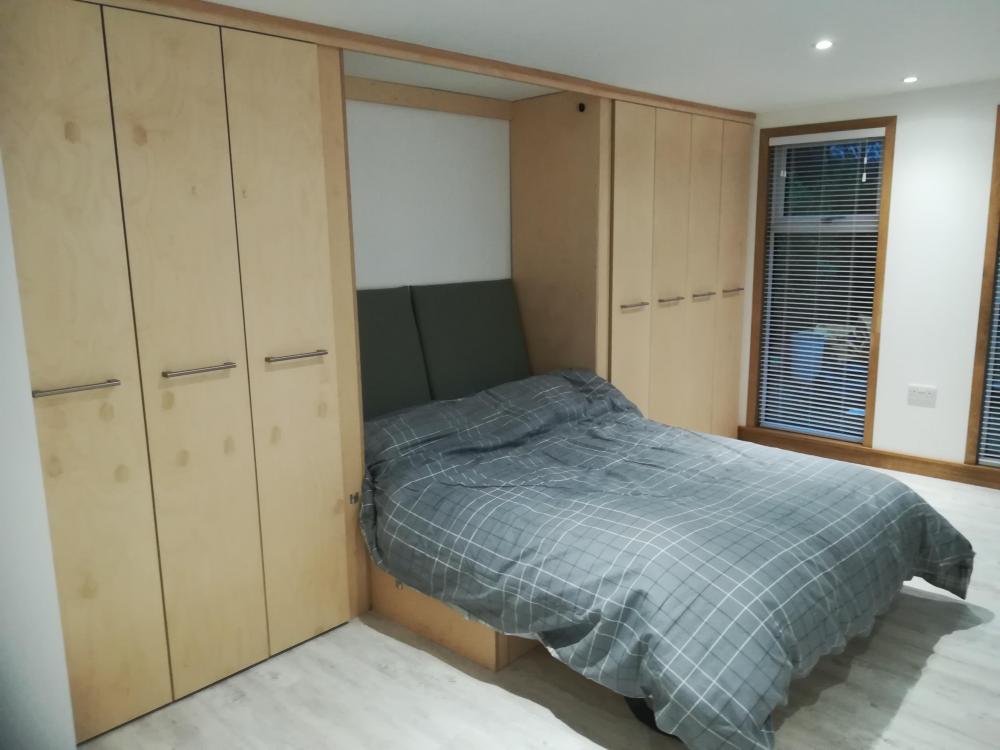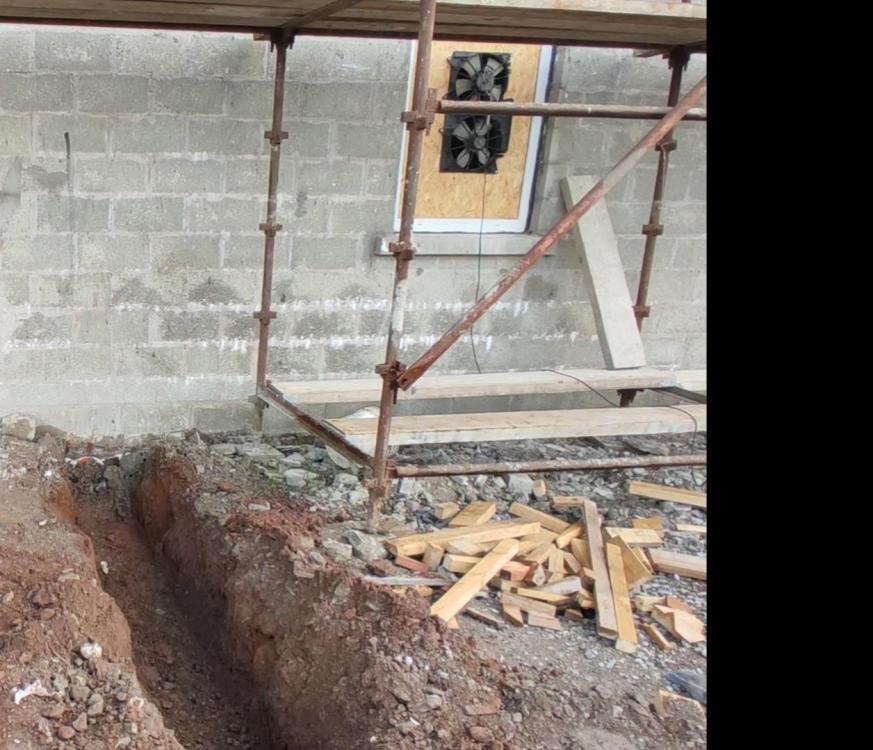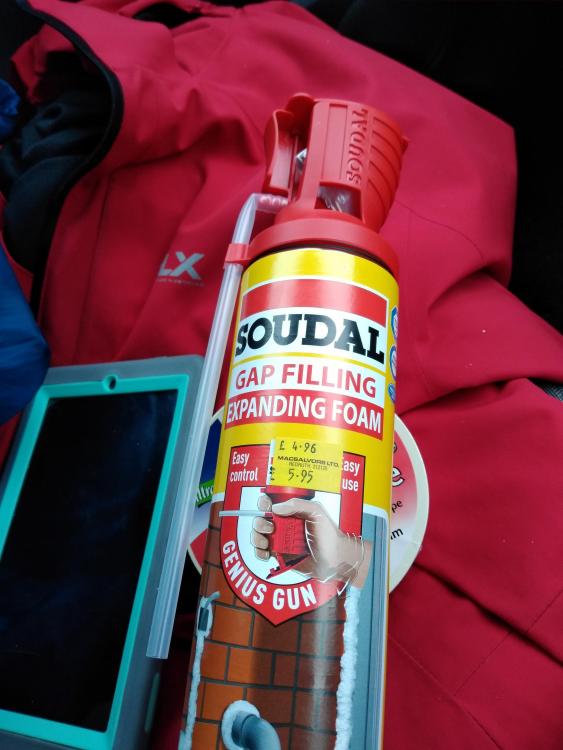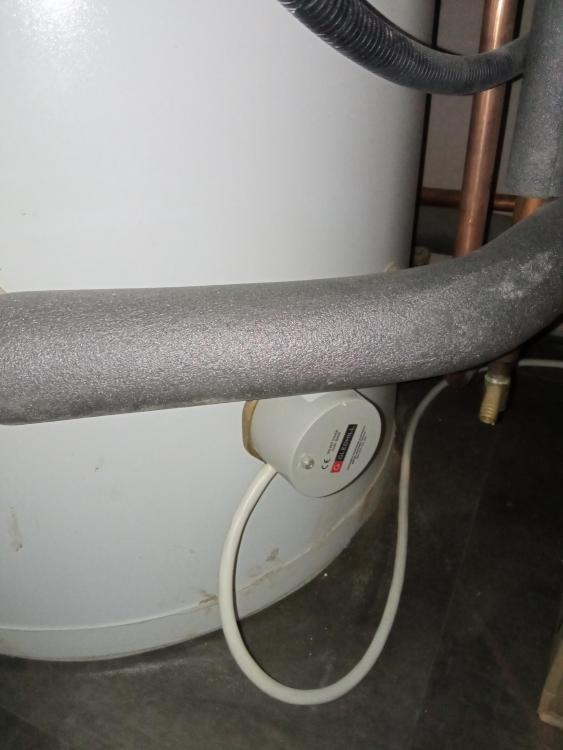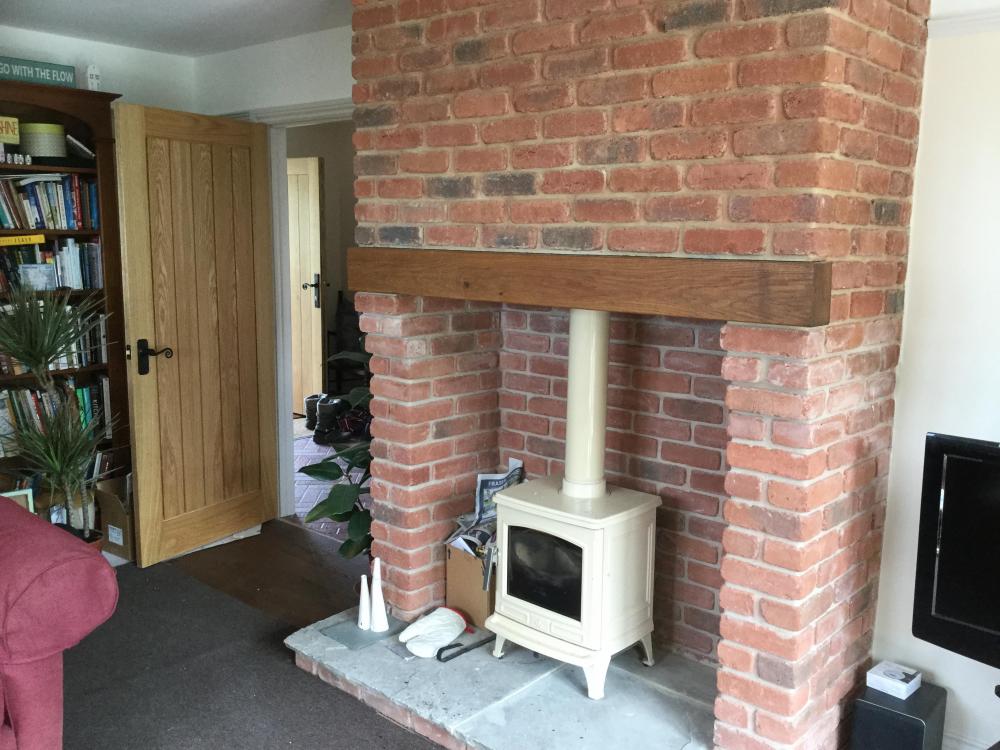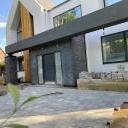Leaderboard
Popular Content
Showing content with the highest reputation on 01/20/21 in all areas
-
3 points
-
I can definitely understand the desire to understand why, but to delay even attempting it for several days until you do? It wasn't as if I was asking you to change anything - purely gather a bit of information that's all. I can't help but be reminded of my 3yr old daughter - every time I ask her to put her coat on she asks why? I always explain but it makes no difference. She'll keep asking why, particularly if the sun is shining as to her that means it's hot outside - I haven't been able to explain to her the nuances of the sun in winter. It doesn't matter though - she still needs to put her coat on whether she understands why or not (and whether I am able to adequately explain it or not). If she doesn't put it on she will remain cold. Okay good. And as a token of my appreciation I'll try and answer your questions in the meantime: Regarding flow temps, if some radiators are being starved of sufficient flow (for whatever reason - could be many reasons) then they won't necessarily be getting the same flow temperatures (very slow flow results in a lot of heat loss before even reaching the radiator). More to the point though - we still don't know what the flow temperature is! Sure, you've set the ASHP to 55C but are you getting that? What if you're only getting 35C? Straight away we'd know why your house is cold. Regarding return temps, these will vary depending on how much heat is being transferred to the room. With all else being equal (ie same flow rate) small radiators will have higher returns (there's only so much heat they can extract) whereas large radiators might be dumping loads (more than necessary). The former is particularly bad because that still-hot water is being returned back to the ASHP which may then be forced to throttle down in order to stay at the target temperature. Because without testing the temperatures you're just guessing. Do the test. If they're out of balance you'll see differences in temperature drops across the radiators and this will lead to you failing to get the most from your AHSP and in some cases (particularly where the heating capacity vs requirement is marginal) you may be failing to provide sufficient heat to all rooms. Alignment of heat-up time is one aspect of balancing, but arguably the most basic. Furthermore, I'd see it as a consequence of real balancing which is aimed at producing the same (and specified) temperature drop across all radiators regardless of location, size, etc. I know you've got an issue with the term but that's tough. I think it's perfect. Big deal - let's move on. Okay, that's good to know. When you same 'the same' though that means nothing. All cold? A'l medium? All hot? All super hot? There's a reason temperature scales were invented - let's make use of them. If you/we can conclusively demonstrate that the ASHP is providing sufficient heat (ie meeting the target flow temperature) and all radiators operating to their design specification (average temperature and temperature drop) and yet the house is still cold then we will know that the radiators are insufficient for the rooms they are in. Four solutions: 1) increase the size of the radiators (within the limits of the ASHP at least), 2) reduce the heat loss in the rooms (reduce drafts, increase insulation), 3) supplement the heating locally, or 4) tolerate the situation. The colder they are the better to be honest. As the room temperature rises the heat transfer from the radiator reduces and so it can throw the results. It's a detail not worth worrying about (particularly in this instance of course unfortunately).3 points
-
Ceiling height = not important Ridge height = important In all seriousness this type of thing is why you want to use someone who understands the planning system to submit your planning application if you don't - what you are in danger of doing is getting your cheap designer to spend way more time than is necessary to get the planning submitted and validated and running up the same fees as if you'd used someone with local expertise!2 points
-
2 points
-
From my understanding, trivial alterations would be a 'non-material amendment', more major changes, but not increasing impact on neighbours etc would be a 'minor material amendment' and would seek to vary the condition referring to the drawings in the original application. 'Material amendments' include changes that would affect neighbours and this would will need a new application.2 points
-
rooflights are treated very differently to dormer windows in planning terms, whether or not you agree with it2 points
-
Your anger and constant frustration is not healthy. I'd hope you are not sat typing in the manner which you often come across. There's jest within parts so hopefully not. It's a case of give and take when you rely on people trying to help you. If you are vague, unclear or misleading in your explanation and when questioned are unable to respond without challenging them aggressively, the quality of subsequent information is going to muddy the waters further as peoples efforts will reduce when they see previous attempts to help have been partially ignored or disputed without reason. If you cannot explain because you understand, take photos. If you don't understand what you are being asked to clarify, say so and be polite and appreciative. Help people to help you. You'll get out what you put in. There's so much fluff in this thread that I could start now saying have you done this or that, but it's probably been asked and shrugged off so people perhaps assume it's not worth the lip service. One thing I can see helping you is for this thread to go stale and fall off the activity list and you coming back and engaging with a fresh mind and clear answers to questions asked throughout to engage people. Bullet pointed, so it's clear what's been tried and covered so ideas aren't repeated. People with experience may see areas they perhaps otherwise assumed you'd tried when suggested before that perhaps you didn't pick up on, or simply didn't think was relevant for whatever reason. At the moment it just looks like you are winding yourself up arguing the toss of what balancing radiators entails and losing focus.2 points
-
Government appointed supervision / management because the thing has gone to hell in a handcart.2 points
-
I grew up with open fires as a kid. In the country. It was great. Or so I remembered....... Then we moved into a rented stone house with open fires. IT. WAS. FREEZING. The memories of being a child in smoky drafty house with a permanent cough and cold returned. We moved again into a small cottage. Open fire. Right bollocks to that I said, went on Donedeal.ie and €200 later and a bit of mucking about had myself a stove. It was a revelation. 4 times less firewood and 4 times as much heat. Happy days. Then we had a baby and all my time disappeared. The novelty of lighting up a roaring fire gradually waned as every day I had to drag out ashes and drag in firewood and wait for a good hour to have any meaningful heat. It became more and more of a chore. I began to feel like this woman. Then I started to read up about indoor air quality. It wasn't too pleasant and now every time I refuel or clean out our stove I get a pang of guilt as a plume of particles drifts off towards our toddler. I'm giving her a better chance of chronic lung problems every time I do this. You say your missus has notions but please make sure she's informed. Here's a good article. https://passivehouseplus.ie/magazine/insight/home-heating-choices-and-air-quality On a less depressing note avoiding a fire in your house will save you money. Even with free timber the payback for our passive house to install a stove was 22 years compared to direct electric. Today my task is to install our entire heating system for our new build. Here's a snap!2 points
-
Every Appeal costs the Council money to pay for prep.2 points
-
The counter argument, is a gas connection comes with a cost, the gas work must be done by a gas safe engineer with a cost, there is an annual service with a cost. On the other hand many of us have sourced our own ASHP's and self installed them for less than the gas connection would have cost, even if gas were available. I accept if you have gas then a gas boiler will be the cheapest system, but for those that don't have gas and can't get it, an ASHP is far more attractive than other alternatives.2 points
-
2 points
-
Hi all. This a massive can of worms and much is to do with a lack of design coordination. For all.. a rough overview. For the last few decades once we started using lighter roofs on masonry cavity wall construction (trussed rafters as opposed to heavy cut timber roofs) we found that the roofs got sucked off. We then started to fix a metal straps to connect the roof to the heavy cavity wall to hold it down. Moving on to timber frame / SIPS. At ground floor it was recognised that when you have a timber kit (include SIPS) that under more extreme wind uplift the wind could lift the TF and the roof so we had straps at the bottom. The straps are usually turned into the outer leaf of masonry and this held the whole lot down. However, that is only part of the story. Now we have this desire to have large openings/ glazing. When the wind blows it wants to tip the building sideways so we need to prevent this. Previously we had a heavy masonry wall / smaller openings. For the building to move sideways the wind etc had to overturn the portions of walls, but the mass of the walls and the shear strength of the mortar resisted this. Now we know that a SIPS panel can carry vertical load. If you stand a SIPS panel up and push it from the top end along it's length .. it's intuitive that it is not going to move much.. call this inplane stiffness. When you have for example panels that are higher than their length, at ground floor the wind can generate significant uplift forces at the bottom corner of the panel. You fix a strap to the panel.. and you can calculate the number of nails etc that are required here to resist this force. But the strap needs to be anchored at the other (bottom) end.. and rawl plugs and a few screws won't often cut the mustard by a very long way... to the extent that you have an unsafe structure. If you have SIPS (which are a fancy version of a traditional kit panel) then if you have a masonry outer leaf you are back to roughly traditional kit design. But if you don't have a masonry outer leaf to ballast (if you have a big set of bifolds this ballast is not there) this you have to find another solution to address the overturning of the SIPS panels. One way is if you have a steel frame that is designed to account for uplift... If you don't have a heavy outer leaf of masonry / other frame then you need to find something that is, or connect the straps to the foundation / your ICF raft for example. The other BIG problem is that you need to make it buildable, practical for a ground workers to set out, (difficult for concrete workers if you have steel projecting when they are concreting the slab.. if you want this you will pay a premium) if not they will often avoid your job like the plague or bung on a big sum. The point of this post is to highlight the following: @SuperJohnG " Tanners came back to me today but said its uo to the superstructure engineer. " To address this issue of the interface between the superstructure and the underbuilding requires a lot of thought and associated design cost, detailing and communication between the different designers. But the super structure Engineer can't do their job unless the foundation Engineer has made suitable provision for connection of the superstructure to the foundation.. it gets even more complex folks when you have basements with ICF, tanking, cold bridge mitigation etc In summary while it seems to be attractive to shop about and try and get the lowest price for each part of the design package it's actually very often false economy.. and be unsafe. Why not find someone that can do the lot, coordinate all of it, while making it buildable. I think some members of BH have chosen this route. I appreciate that ICF / SIPS and so on are a hot topics on BH but these developments require some complex detailing to make sure that the building is still safe while maintaining the insulation envelope. One could be cynical and suggest that it's not in the interests of the material supplies ect to point out the additional design coordination element (and associated fee plus contractor cost element) required to achieve a coordinated, buildable in cost terms, safe design. By way of encouragement. Structurally, sitting a house on thick insulation is not new. Cold store designers have been doing this for years, as have say the Canadians. But the devil is in the detailing to address cold bridging, tying a SIPS panel to the found / basement etc. In Super Johns case, if there is no heavy outer leaf of masonry there may be a solution where you can use the floating floor slab to provide the ballast, although this requires detailed analysis and maybe a change in thickness of the reinforcing and the depth of it within the slab. Another may be to design some thicker straps and connect them to the foundations with expanding anchors perhaps. If you encounter this type of problem then it may only require to be done locally. Much will depend on the panel layout, how the stability is achieved and the local panel uplift forces that occur due to the overturning effect.2 points
-
1 point
-
Whilst you're building at any rate I'd put MVHR anyway. It'll help with your SAP. Does away with trickle vents and room extractors and will ensure if you end up with some airtight rooms they won't be stuffy. Given your project is pretty large it won't be significant in the budget.1 point
-
1 point
-
An inward opening door is a flawed design for a door facing the prevailing wind. On a windy day you will not stop some water getting over the drip beads and finding it's way into the gap between the door frame and door at the bottom, with the only thing holding it back being the seal. Even if the seal is perfect, there will be a little bit of water sitting there, just waiting to come in when you open the door. Ask me how I know.1 point
-
if you are creating new overlooking onto a private garden then it's definitely something which will require a planning application, that's a very material consideration1 point
-
1 point
-
1 point
-
As far as I can tell if they think the neighbours need consulting or it would impact local area then the go full app. Do your dormers overlook neighbours or are they very visible from the road?1 point
-
1 point
-
No gas here hence I have limited options and run an electric boiler currently. If I had mains gas then I would have that in a heartbeat.1 point
-
Hi Joe, Thanks for this, we have spoken to the neighbour and he would be fine with this, the space is a "service area" for bikes and bins so he's fine with us routing a pipe, but he didn't want us digging up the area to lay an external drain, which is understandable! Cheers1 point
-
I did hear on the grapevine (local councillor) that my local council planners were in danger of being taken into “special measures” (whatever that means?).1 point
-
you don’t have to convince me, my only revenge was going to appeal the local planners decision to refuse and winning hands down, the appeal officer even told the planners they were not abiding by their own rules,!!!! ?(and that’s the second time I have won a planning refusal).1 point
-
Look at it like this - you'll need drawings done anyway so crack on with those. Then chance your arm at the NMA and if you fail, you do the full app. The fee is lost but up to you if it's worth a punt. We did 3 planning apps: first rejected, second approved (after a bun fight and threat to appeal) and then we did a third as there were changes well outside of NMA. First one garnered lots of 'community comments', second fewer and third zero.1 point
-
From my own experience, you can submit a Non Material Amendment (lower app fee and simple yes/no decision) to an existing approval for minor tweaks - I did one that increased the front windows from 1000mm to 12000 mm and added solar PV to rear. As it was a tweak, I did the drawing adjustments myself and they were accepted. However it's at the planners discretion as to whether the amendment is non material. If not, you will need to do a full planning app again. I put in a second NMA for solar panels on front elevation and this was rejected as it affected the street scene. From the planning portal ... Government does not provide a statutory definition of ‘non-material’, it is down to the Local Planning Authority to be satisfied that any amendment(s) sought are ‘non-material’ in order to be eligible for this type of application.1 point
-
your mains water will need to be min 850 deep anyway so 2 birds with 1 stone.1 point
-
Agree with the above - only toilet paper (which is designed to disintegrate) is allowed in our loos and we are on mains sewage. Anything else (wipes, etc) goes into a lined lidded bin in the bathroom. No smells and bins is emptied once a week. We had a blockage early on, likely a wipe snagging on something in the older part of our drains run from the previous build. That was not pleasant to resolve.1 point
-
Exactly right: unspeakable issue. Its that unspeakability which causes so much unnecessary kicking of cans down the road. For one extreme example read this. Bleach and toilet cleaners, in moderation, have made no difference to ours - as yet (2 years in, weekly bleach clean of all loos and bathroom). In normal use, the volumes of good bacteria-killing chemicals like bleach should be too small. But there are alternatives; you might want to try those. In the normal cleaning cycle for the digester, sanitary waste that does not break down will get pumped away every two or three years. If you decide to use a digester, ask the manufacturer what their recommendation is. If we'd had the choice, we would have connected to the mains sewage system. Its a no-brainer. Even if you need to pump it up-hill a bit.1 point
-
As a NI native I understand the appeal of an open fire I had an old school friend who I had to stop coming round for a drink in the garden as after about 10 mins he wanted to 'get a fire going' ... SAP scores may not register with you but you need to pass to get the building signed off, there is a recent thread where someone is now being advised to retro fit solar PV to bump up their score due to some lack of foresight at the design stage. Also forever homes have a habit of being sold at some stage so they need a valid SAP. As Peter says above, if the open fireplace is a must have then don't waste money on airtightness, insulation and MVHR elsewhere as it will be pointless. A house works as a system, doesn't matter how airtight the rest of it is when there is a massive hole in the envelope - two actually as you'll need a free air supply to compensate for the fire. All the heat you pay to generate elsewhere in the house will fly up that chimney.1 point
-
save your money. No point putting any more than BRegs level insulation in if you are having open fireplaces as the air test will be off the scale (I doubt it will actually depressurise the house enough to register) and you’ll need to add solar or something else to get a SAP Score to pass I expect. Open fires are a relic from the 18th century and should stay there. There are some beautiful new stoves that you could have and they would be both efficient and air tight.1 point
-
That's good, so as you say the heat pump sets the hot water temperature and the immersion is used for the legionella cycle. Just switching off the legionella cycle should eliminate the immersion use and you should be sorted.1 point
-
The best thing you can do is make sure your builders understand the concept in that case and the level of detailing required to get a good result. I'd scour eBay and buy a car fan, wire and some crocodile clips to make up a test fan in a sheet of OSB or ply for one of the windows. Clip it onto the car battery to depressurise the house, (best to leave the car running I found as it draws a lot of current and flattens the battery). Go searching for leaks with the back of your hand. This will do more explaining about the nature of airtightness than anything else I could say. https://www.ebay.co.uk/itm/2006-2011-LEXUS-IS220-2-2-D-RADIATOR-FAN-422750-1620-/203184726071?_trksid=p2349624.m46890.l492921 point
-
Yes but only if the claim is received within 3 months of completion.1 point
-
@canalsiderenovation I am convinced it’s just teething problems, they are so different from oil or gas boilers but once up and running how you want it I think you will be pleased, I am with mine.1 point
-
Unfortunately we don't have any choice. The electrician is back for two days to finish off before he goes into hospital for an operation and then won't be working for 12 weeks! @AliG the only thing on our tank that resembles your picture is this below wired into the heat pump and there is no temperature dial and I've literally had a torch all round the tank. Is it possible this is set by the heat pump? On the plus it does seem like since the excessive unit consumption on the immersion at some point between yesterday and 3:30pm today now seems to be likely to have been the legionella cycle as having just now taken another reading the immersion meter reading is the same as 3:30 so I'm hopeful that now I've deactivated it, it won't happen again. I'll keep monitoring that.1 point
-
I'd tend to think large louvres made out of Cedral or Hardiplank would have minimal air flow restrictions and not affect it greatly, particularly if the back is left open and the louvres are say 300mm plus from the cabinet.1 point
-
The dropped kerbs you could do by way of phot and covering letter to highways. I have done a traffic management plan. Below are the headings. Try and cover them all. This one was quite detailed but for a simple project could be brief. Site address Planning ref Description of works Contact info Permitted routes for deliveries (overlaid on map with weight restrictions etc) Construction traffic hours Site access Abnormal loads / unloading by crane Highway damage prevention Vehicle scheduling (table showing number of vehicles at different stages) Other highway users Travel to work / contractor parking.1 point
-
conc slab will work out slightly cheaper BUT is a lot more work. Block and beam is rapid and you get a perfect flat floor. You have to be concious of sleeper walls if anything internal is to be load bearing.1 point
-
what is the warrant here for, is it classed as a conversion? You just need to be careful on the U-Values depending on how it's going to go through the warrant process. Do you intend to have a SAP calc done or are you relying on the backstop U-Values and heating system guidance in the technical handbooks? in terms of beam and block vs solid, normally it depends on what height you have for a solum and how you are going to support the floor - the other thing you've got to think about inside existing structures is how practical either route is? infilling a large footprint inside existing walls might take a huge amount of labour as it'd probably be barrowed in etc1 point
-
Hi mvincentd. Yes we too have had a couple of instances where they self illuminate. How often they do it I don't know, it just depends if you happen to be facing them and only half asleep at the time. I've taken one fully apart, it's just the 4 little screws holding the pcb in so quite easy. I suppose you can put some nail varnish or tape over the leds if you want to. Having just come off the phone to Heatmiser and speaking with the guy who designed them, we went round in circles a lot, but basically he agrees that they a) do generate heat and b) this affects the sensor. This apparently is taken into account in the software algorithm and once calibrated, should be fine. But we couldn't really agree that this shouldn't be happening and that there wasn't enough air flowing through the housing to properly register room temperature. He claimed that my insulated stud walls were the problem but I pointed out that in all new builds, stud walls have to be acoustically insulated according to building regulations and therefore the stat has to work with these. So conclusion. All modern 230v stats with digital displays must generate heat because they have an inbuilt psu. Therefore any internal thermistor sensor is compromised unless there is very good air flow and a larger housing is therefore required. The modern sleek look just doesn't work and only solution is a remote sensor. We did agree on the fact that a remote sensor would be better at least.1 point
-
Steal away fella. A plumber friend told me to keep the feeds from the manifold to the rads to under 6mt each. Best of luck.1 point
-
Open fires have a net cooling effect as they draw out more heat energy (the warm air) than they radiate out (don't know about back boilers). They have no place in our world anymore. There's a house (about 150m²) that's just got fpp across the road from us and they have three open fires and a wood fired pizza oven in their house design... It'll either be freezing or unbearably warm ?. Not sure how they'll pass their air tightness test. And your MVHR won't work properly at all, esp when it's windy or the fire is lit. So you'll be better off with trickle vents and bathroom extractors. And you'll also need a wall vent in the rooms where the fires are, so even draughtier. I think a room sealed stove is the obvious compromise.... You can always fire the door open for effect when the mood takes you. Sorry to be negative, but that's the reality.1 point
-
1 point
-
the only way you will find this is physical investigation. You’ll need to access the inside of the chimney and get a camera in there and then work out where the water is getting in. As a minimum I expect those pots and the top flaunching needs removing and redoing, the lead work may also be suspect so it will require a good amount of investigation to find the true source of the leaks.1 point
-
3 years ago I built a 71sqM 2 double-bed bungalow for £96k. Timber frame construction with cedar cladding. The site was difficult on a 1:8 slope with poor access on a remote site in N Wales. The only ‘work’ we did ourselves was the decorating + I did all the drawings, PM work and coordinated subcontractors.1 point
-
1 point
-
@AliG I love the aluminium. Your gable looks striking1 point
This leaderboard is set to London/GMT+01:00




